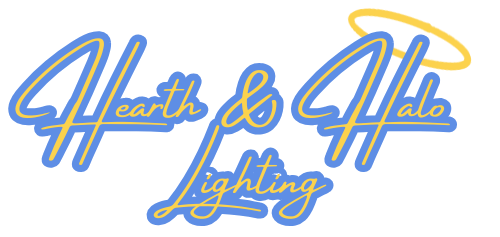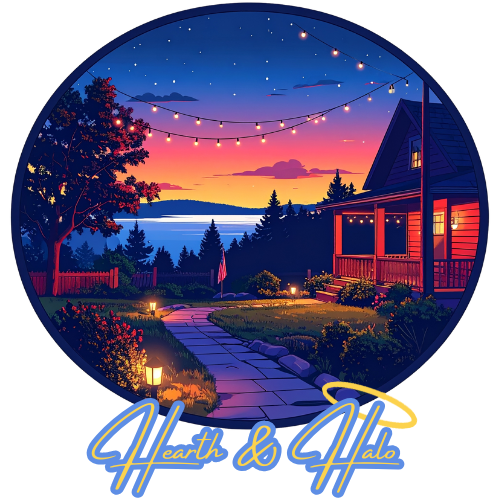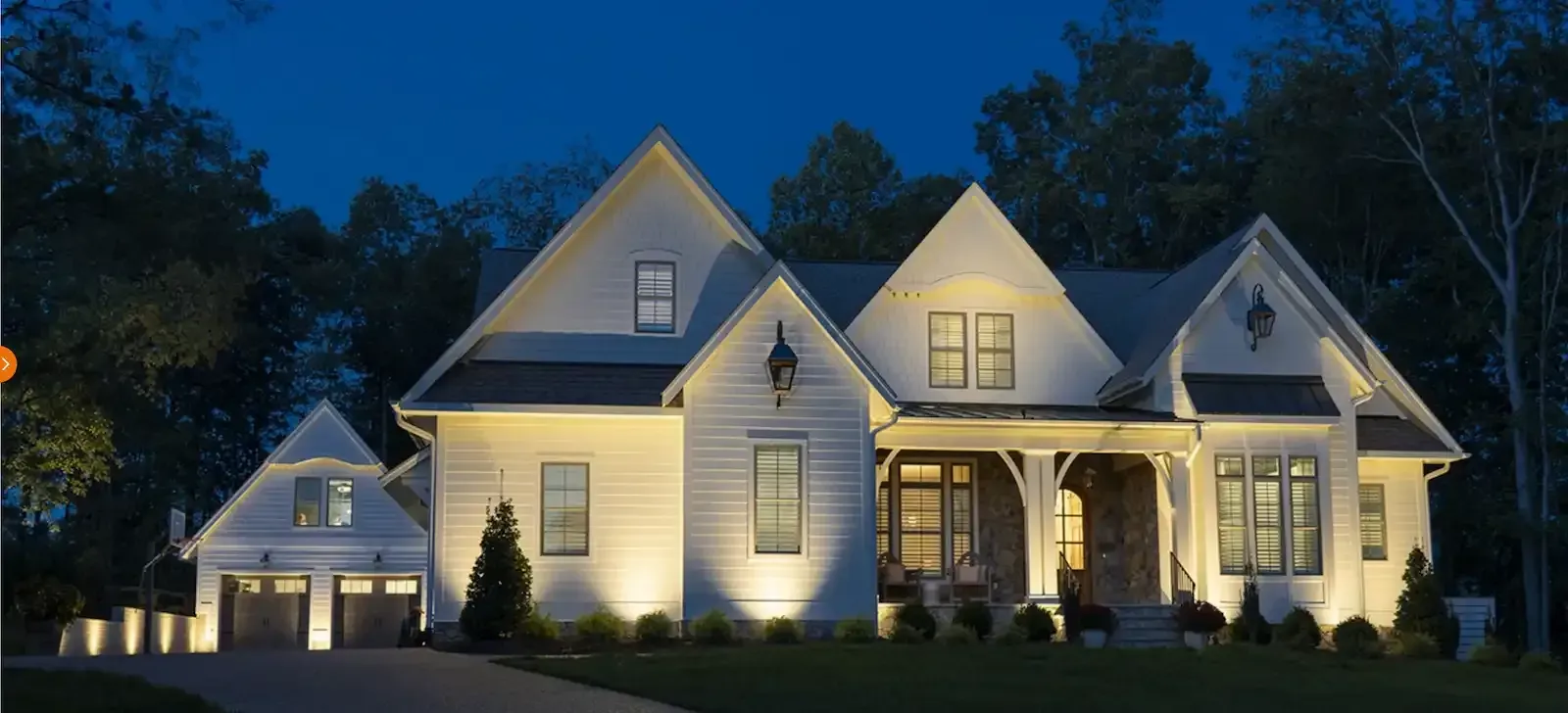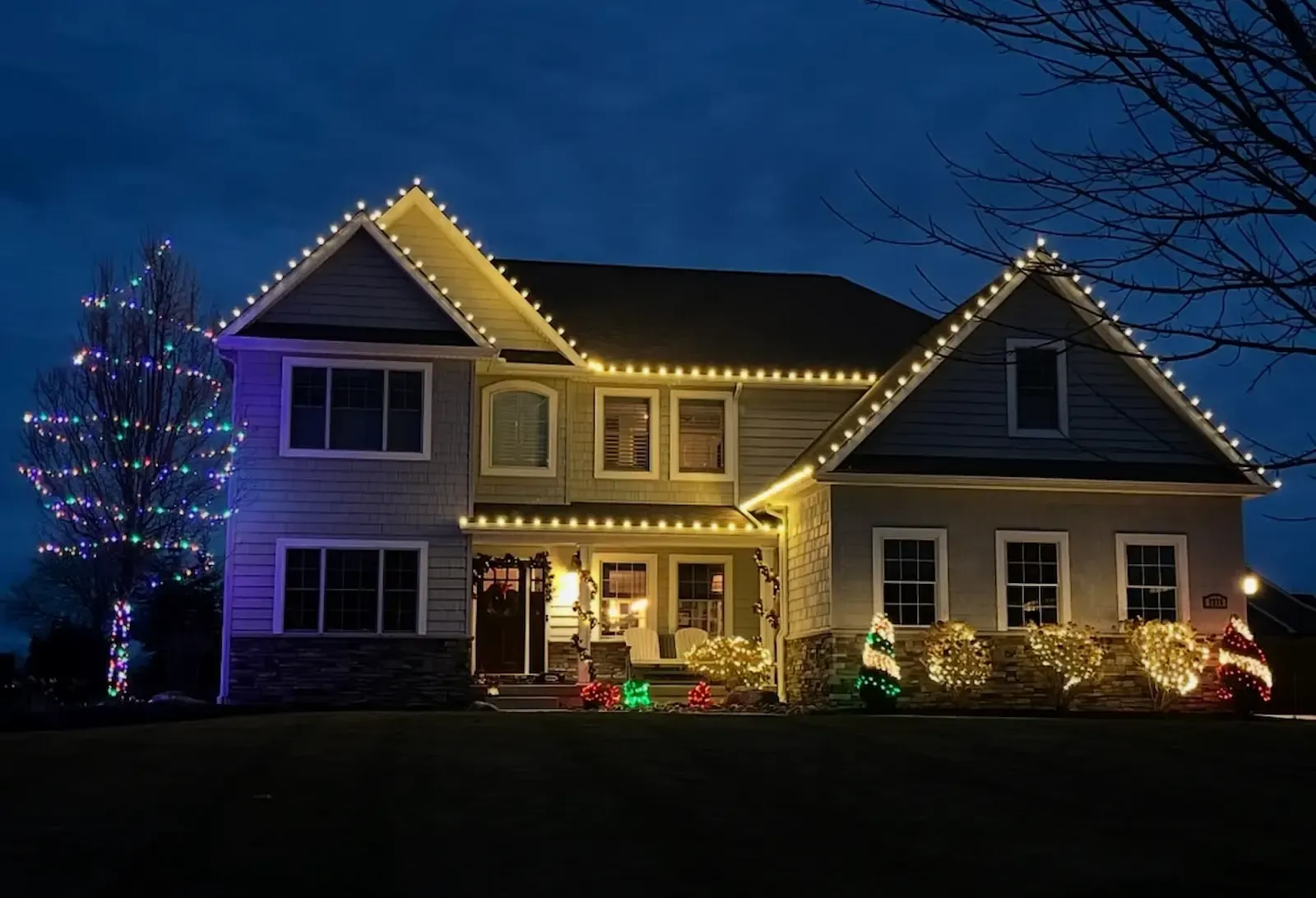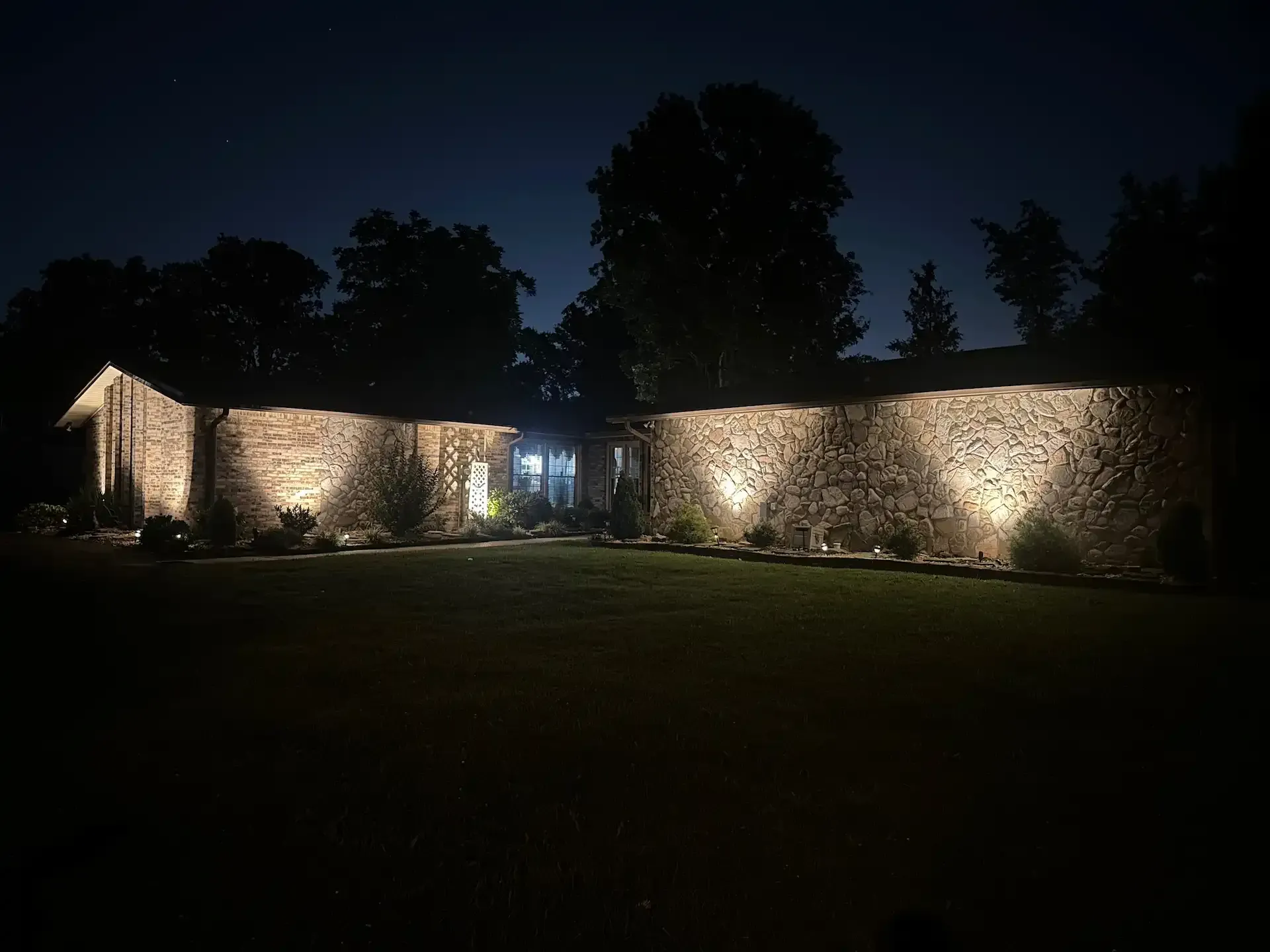If you’re asking, “Is landscape lighting worth it?”, you’re likely weighing curb appeal and safety against cost and upkeep. Smart question. The short answer: done right, a professional system pays you back in property value, usability, and security—without constant tinkering.
At Hearth & Halo, we design, install, and night‑aim durable systems across Erie County and Niagara County that look elegant, boost home value, and make evenings outside more enjoyable.
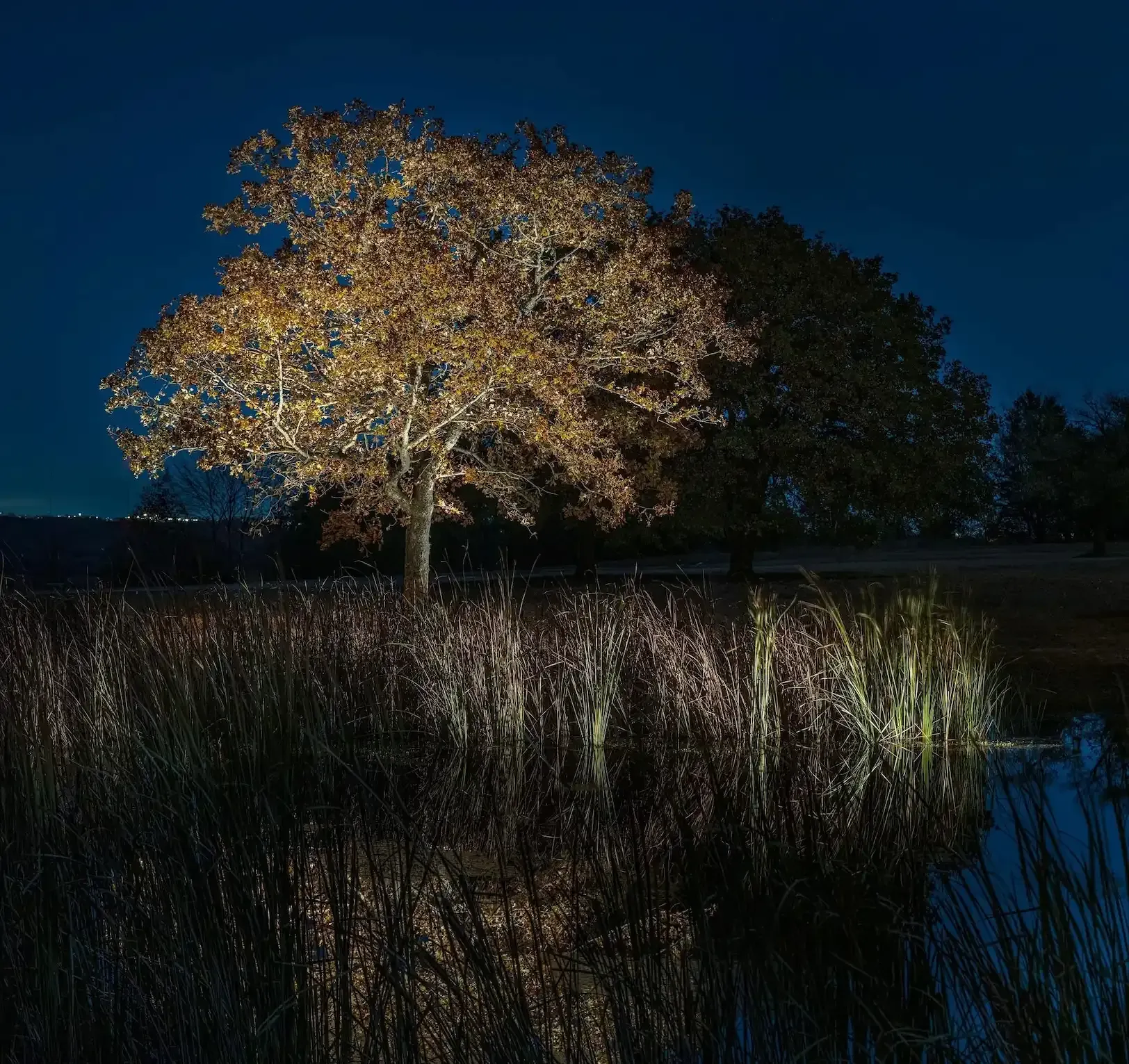
Serving Western NY, including Orchard Park, Williamsville, Tonawanda, and Lewiston.
Key Takeaways
- Yes, it’s worth it when designed and installed professionally: lasting fixtures, even light, low maintenance.
- ROI shows up in three ways: curb appeal/value, safety/usability, and security/camera clarity.
- Numbers matter: small increases in value can offset a full system over time.
- Night aiming + load planning prevent dim runs, glare, and nuisance trips.
- Local proof: projects in Erie and Niagara Counties hold up through winters.
What You’ll Learn
- How landscape lighting delivers measurable and practical ROI.
- Decision factors that determine whether the investment makes sense for you.
- Option trade‑offs between DIY kits and professional systems.
- Risks that erode ROI and how we avoid them.
- Our high‑level approach to long‑lasting results in Western NY.
Main Content
Landscape lighting isn’t just about looks. It increases perceived home value, improves safety on steps and paths, deters opportunistic intrusions, and extends how long you use outdoor spaces. In Western NY, a system must also survive freeze–thaw cycles and salt—otherwise, upkeep costs eat into the benefit.
A well‑designed plan balances beam spreads, color (Kelvin), and lumen levels, then matches them to proper wiring, transformer capacity, and connections that won’t wick moisture.
Decision Factors
Consider these before you invest:
- Goals: Curb appeal, patio usability, wayfinding, security, or all of the above.
- Home layout: Long runs increase resistance and voltage dropV=I×R; plan multiple taps and appropriate wire gauge.
- Fixture durability: Brass or marine‑grade housings with sealed optics outlast thin aluminum or plastic.
- Glare control: Shields and aiming prevent light in windows and cameras, improving comfort and footage.
- Controls: Photocell + timer or smart scheduling reduces waste and keeps the look consistent.
- Serviceability: Labeled runs, accessible junctions, and documented loads simplify future changes.
Options Compared
- DIY kits
- Pros: Low upfront cost, quick to start.
- Cons: Connector failures, uneven brightness, glare, limited lifespan.
- Best for: Small paths or temporary accents.
- Semi‑pro hybrid (you own fixtures; we design/aim)
- Pros: Better design and aiming; can reuse existing components.
- Cons: Warranty gaps and mixed connector quality can limit longevity.
- Best for: Upgrades to an existing system.
- Full professional system
- Pros: Cohesive design, weatherproof wiring, night aiming, longer service life, documented loads.
- Cons: Higher initial investment than DIY.
- Best for: Whole‑home curb appeal, patios, and perimeter lighting with security benefits.
Real‑World ROI (simple, sane numbers)
- Curb appeal/value: Many buyers expect tasteful exterior lighting. A modest 0.5%–1.5% perceived value lift on a $350,000 home equals $1,750–$5,250—often enough to offset a significant share of a quality system over time.
- Usability: If lighting enables 3 extra evenings per month outdoors for 6 fair‑weather months, that’s 18 more uses of a patio or yard each year—real lifestyle ROI.
- Safety and claims: Reducing trip risks on steps and walks can help avoid costly incidents; glare‑free illumination improves visibility.
- Security & cameras: Balanced light helps cameras avoid IR bloom and blur, improving useful footage and deterrence.
These benefits compound if the system is durable and low‑maintenance.
Risks & Red Flags That Kill ROI
- Voltage drop: Long daisy chains with undersized wire dim distant fixtures.
- Moisture‑wicking connectors: Piercing “quick” connectors fail after freeze–thaw, tripping GFCIs.
- Glare and trespass: Light in neighbors’ windows or your own eyes reduces comfort and can prompt complaints.
- Mismatched color: Mixing 2700K and 4000K creates a patchwork look that undercuts curb appeal.
- Shallow burial: Exposed cable gets cut during spring cleanups; repairs add cost.
How we prevent these:
- Load modeling with correct wire gauge and transformer taps to manageV=I×R.
- Waterproof splices and sealed housings built for Western NY winters.
- Night aiming with shields/louvers to remove glare and hot spots.
- Color planning so your architecture and landscaping read naturally.
- Documented runs for easy service and upgrades.
Our Approach (High‑Level)
- Assess: We walk the property at dusk (or review photos), mapping paths, steps, trees, and camera views.
- Model: Calculate loads, run lengths, taps, and wire gauge; select optics and Kelvin to fit your style.
- Verify: Bench‑test transformer capacity and controls; confirm waterproofing strategy and burial routes.
- Install: Clean trenching, protected splices, labeled circuits; fixtures leveled and secured.
- Night Aim & QA: Final aiming for drama without glare; we document settings and provide a maintenance plan.
Buyer Checklist (no DIY steps)
- I want evening curb appeal and clearer camera footage.
- Steps/paths feel risky after dark.
- Far fixtures are dimmer than near ones.
- I see glare in windows or on cameras.
- I prefer brass or marine‑grade fixtures that last.
- I want a system designed to withstand Western NY winters.
If you checked two or more, a professional system likely delivers a strong ROI.
Local Notes for Erie County and Niagara County
We install and service across Erie County and Niagara County, including Williamsville, Orchard Park, Tonawanda, and Lewiston. Western NY specifics we design around:
- Freeze–thaw resilience: Waterproof, heat‑shrink splices and protected crossings at hardscape.
- Snow and salt: Brass fixtures and sealed lenses resist corrosion and pitting.
- Service proximity: Fast support after storms or plow damage; we’re routinely near Amherst and North Tonawanda in Erie and Niagara regions.
Contact Us Today!
